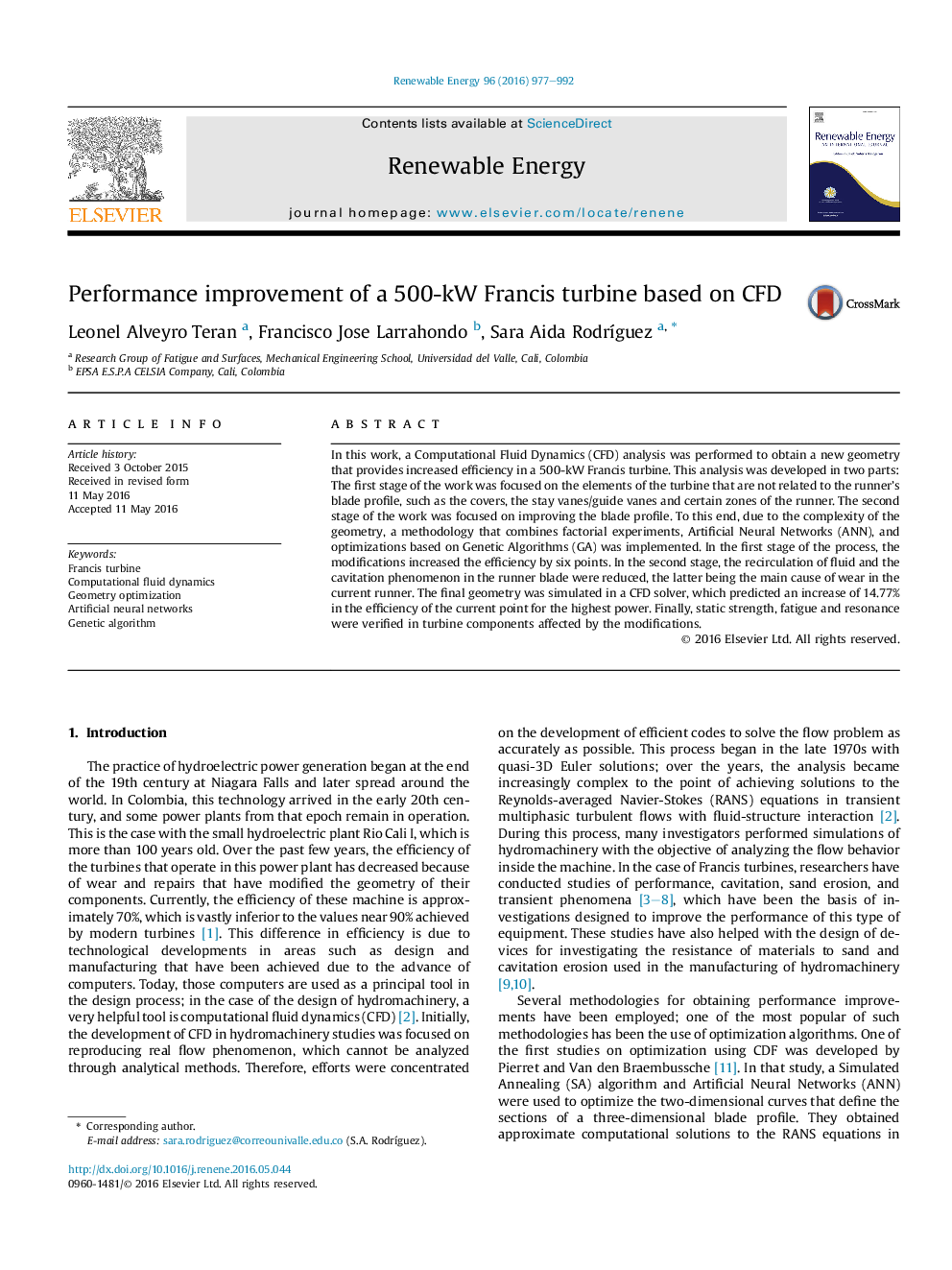| Article ID | Journal | Published Year | Pages | File Type |
|---|---|---|---|---|
| 10293937 | Renewable Energy | 2016 | 16 Pages |
Abstract
In this work, a Computational Fluid Dynamics (CFD) analysis was performed to obtain a new geometry that provides increased efficiency in a 500-kW Francis turbine. This analysis was developed in two parts: The first stage of the work was focused on the elements of the turbine that are not related to the runner's blade profile, such as the covers, the stay vanes/guide vanes and certain zones of the runner. The second stage of the work was focused on improving the blade profile. To this end, due to the complexity of the geometry, a methodology that combines factorial experiments, Artificial Neural Networks (ANN), and optimizations based on Genetic Algorithms (GA) was implemented. In the first stage of the process, the modifications increased the efficiency by six points. In the second stage, the recirculation of fluid and the cavitation phenomenon in the runner blade were reduced, the latter being the main cause of wear in the current runner. The final geometry was simulated in a CFD solver, which predicted an increase of 14.77% in the efficiency of the current point for the highest power. Finally, static strength, fatigue and resonance were verified in turbine components affected by the modifications.
Keywords
Related Topics
Physical Sciences and Engineering
Energy
Renewable Energy, Sustainability and the Environment
Authors
Leonel Alveyro Teran, Francisco Jose Larrahondo, Sara Aida RodrÃguez,
